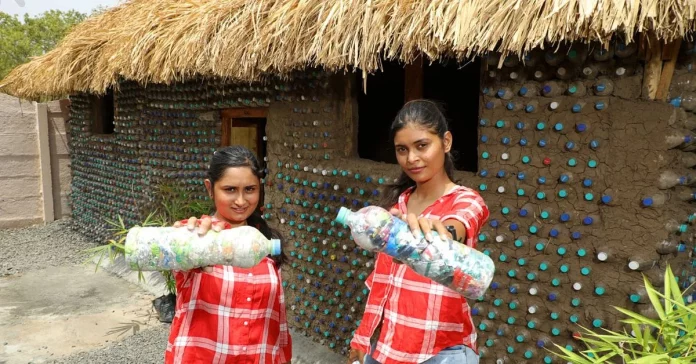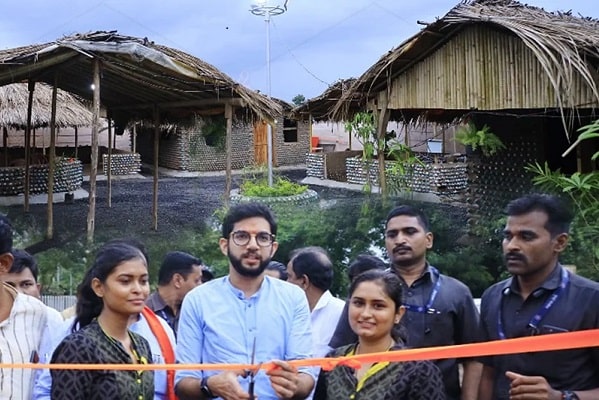
Two Young Women Build An Eco-friendly Home Using Plastic Waste In India
Date:

Share post:
Plastic waste emission in India amounts to 3.5 million tonnes annually. The COVID-19 pandemic has contributed to aggravating the waste emission rate. Disquieted with the facts, two buddies in their early 20’s
from Aurangabad, Namita Kapale and Kalyani Bharmbe developed a unique solution for constructing an eco-friendly home with surplus plastic waste.
The house was built in Sambhaji Nagar, a neighborhood to Daulatabad, occupying a space of 4,000 square feet. They constructed their dream project using 12–13 tons of non–recyclable plastic, soil, and cow dung and named it ‘Wawar‘, which denotes an open space that people frequently visit. According to Namita, the cost to construct their home is Rs 700 per square foot, half the price of cement dwellings. The entire construction cost of their sustainable innovation was Rs 7 lakh, which they covered with their savings added by family assistance. They finished the construction in ten months with the help of fifteen girls working as daily wage labourers. Two partially open square-shaped rooms make up their eco-friendly home. It doesn’t need heaters or air conditioners in the winter or summer. “It is a speciality of mud homes,” asserts Namita.
“Mud houses often last for a few years. If we perform routine maintenance, such as plastering and whitewashing with a mixture of cow dung and soil, our home should last for at least 10 to 15 years,” she explains.

Namita and Kalyani received their diplomas in Fine Arts from the Government School of Art and Design in Aurangabad in 2020. COVID-19 lockdown in 2021 marked the beginning of their effort to build an environmentally sustainable home after they had a tour visit by Akshar Faculty to Pamohi village of Guwahati, where the college had filled empty plastic soda bottles with cement to make seats for students. To give shape to their idea, they did a thorough study of a video by Akshar Faculty to learn the basics, which helped to outline their plan.
The determined duo remained committed to their job despite solid opposition from home. “Many people even called us bhangar wali, plastic wali, and bottle wali (junk sellers)”, Namita recalls.
Together, the two collected almost 16,000 plastic water bottle garbage. In addition, they constructed eco-bricks out of dirt, bamboo, non-biodegradable plastic trash, and different kinds of plastic bricks from plastic bottles. They decided to utilize mud rather than cement.

Initially, they constructed a 6*4 tall wall using eco-bricks, which was a failure as the wall collapsed due to less resistance and durability of the bricks made from plastic and soil. To sort out the loopholes, they started using Poyta soil which has better resilience power than porous black soil. The wall was coated with mud and excrement, and the plastic bottle bricks had been stacked on top of one another. Bamboo and wood were used to build the roof, and wood was also used to build the entryway and windows. The fruit of their hard work came with several trial and error practices. The failure led them to a better way rather than succumbing to despair. Authorities Engineering School, Aurangabad, inspected construction materials in July 2021.
Additionally, they constructed a similar structure in the city. They are now preparing to scale the project. Namita adds, “We’re looking into the best ways to make multi-story residences, dividers, and roadside colonies out of plastic bottles“.
The duo has shown the world that age is just a number; grit and determination to make a positive change is the key to success!
